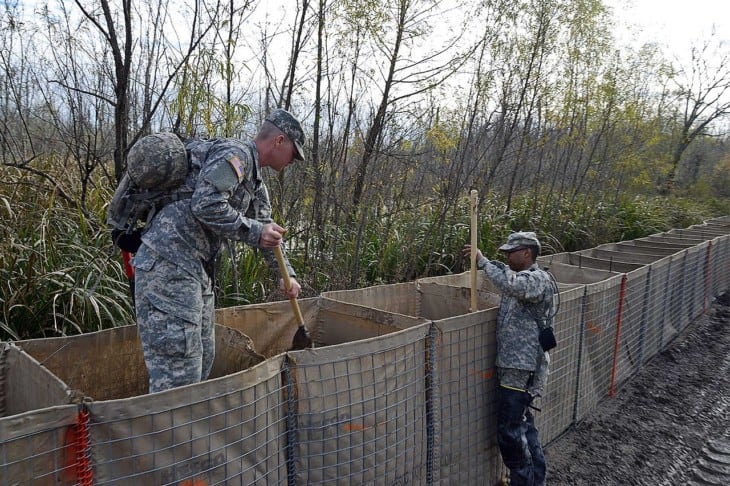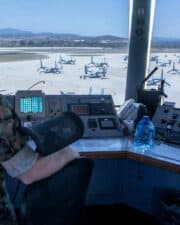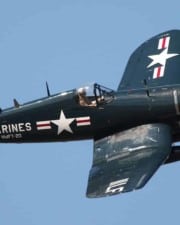HESCO barriers are used as temporary fortifications or for protection against flooding and erosion. In 2005, HESCO barriers were used to reinforce levees after Hurricane Katrina hit New Orleans. As HESCO products are used for civic projects, you may assume that civilians can buy HESCO barriers.
HESCO does not sell products to civilians. HESCO Bastion Limited mostly sells barriers to government agencies, including the US military and Department of Defense (DoD). However, it is not illegal for civilians to own HESCO barriers.
What Are HESCO Barriers?
The HESCO barrier is another name for the Concertainer, which was developed by a British entrepreneur in the late 1980s. The original Concertainer was made to combat erosion and protect against floods. However, HESCO barriers became popular in the military during the First Gulf War. US forces used HESCO barriers to erect military fortifications.
HESCO barriers come in a variety of sizes and are shipped collapsed. Setting up one of the containers takes seconds. Each unit consists of a wire mesh frame covered in a heavy-duty fabric liner. The inside of the container is then filled with soil or gravel to create temporary walls.
The barriers are made with non-woven, UV-resistant material. Each unit should survive up to five years in the field, even in harsh environments.

Where to Buy HESCO Barriers?
HESCO barriers are available from approved HESCO distributors and retailers. The distributors only sell to approved organizations, which means that a civilian cannot directly buy HESCO products.
Yet, HESCO products may end up on third-party marketplaces. HESCO containers sold online come with additional risks, as there is no guarantee from the manufacturer or warranty. Many of the “HESCO” products sold online are also imitation products made with cheaper material.
Why Does the US Military Use HESCO Barriers?
Branches of the US military rely on HESCO MIL units due to their efficiency. The collapsible design makes HESCO barriers lighter and easier to ship compared to the material needed for erecting concrete walls.
Setting up HESCO barriers and filling with sand or gravel also requires less time and manpower compared to filling small sandbags. A few troops can erect over 100 feet of the HESCO wall in seconds. The US Army Corps of Engineers have also used HESCO barriers for flood control. The containers are affordable, costing just $240 for every 15 feet of HESCO walls.
How Do You Install HESCO Barriers?
HESCO barriers come collapsed. After unpacking the material, unfold each barrier. The barriers connect to each other, allowing individuals to quickly build walls. The containers are then filled with soil, sand, or gravel. The fill material is then packed.
HESCO also released a newer system called RAID. Rapid in-theatre deployment (RAID) includes a release mechanism to simplify the deployment process. The barriers come in a container that automatically deploys each unit. The container is dragged across the ground, allowing soldiers to unfold several hundred meters of barrier in several minutes.

Where Does the Name HESCO Come From?
HESCO Bastion is the name of the company that produces the Concertainer, which is also often referred to as the HESCO barrier or HESCO bastion.
HESCO was founded by Jimi Heselden. The name of the company is likely a portmanteau of “Heselden” and “Corporation.” Concertainer comes from the combination of “concertina” and “container.”
HESCO MIL units are barriers designed to meet military (MIL) standards. The company currently offers 12 different sizes based on MIL standards. The MIL1 container measures 54x42x32 inches while the MIL10 container measures 87x60x100 inches.
Can a HESCO Barrier Stop a Bullet?
HESCO barriers filled with sand, gravel, or earth should stop rifle bullets and other shrapnel. The material used for the barrier is not bulletproof like body armor. The containers are made with heavy-duty material, but they cannot stop a bullet or explosion.
The protection provided by a HESCO barrier comes from the material used to fill each unit. The containers also come in a variety of sizes. Some of the smaller units may not stop a heavy projectile, such as a car bomb.
A two-foot-thick barrier should stop ammunition from a military-issued rifle. Four feet of barrier is needed to protect against bombs and improvised explosive devices (IEDs). A five-foot barrier should protect against a rocket-propelled grenade.
Related Posts











